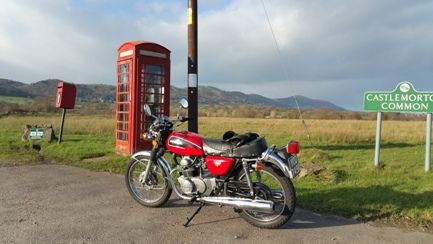Snowy1 replied on 09/07/2016 21:46
Posted on 09/07/2016 21:46
At some time, we must all of heard about a vehicle electrical fault that appears to be a "One in a million fault" the sort of fault which garages/dealers are unable to find and fully cure. In many cases they only manage to temporary cure and the fault returns. During my time I have undertaken a few such faults and thus far managed to fully diagnose them, maybe more luck than judgement to say the least. Some members who are very electrically minded may find my recent such event quite interesting especially when I explain the cause of the fault.
A motorcyclist had a charging problem with his motorcycle, the alternator (3 phase, delta windings, permanent magnet type) was undercharging but this was not a straightforward fault.
The motorcycle had been taken to several dealers for rectification of the fault, a new alternator stator, regulator/rectifier unit and motorcycle wiring harness had been fitted by these dealers and the owner was told that the fault was cured upon collecting the motorcycle on each occasion, but each time a few days later the battery would run down yet again.
The owner was recomended to bring the motorcycle to myself for diagnoses of the fault. Under the circumstances I felt sorry for the owner and took the job on with no charge, i.e. parts only if used. Symptoms of the fault were as follows; At tickover, the alternator was balancing the electrical loadings with the headlight on and still showing a 3 amp charge. When the engine speed was increased the charging rate decreased (opposite to what should normally happen) and when the engine reaches 3000 RPM the alternators output totally terminates even though there is still a heavy electrical demand at this time.
I must admit, this one had me pulling my hair out but I applied one of my old time theories; "If there is a fault, there must be a cause, as there is a cause, it must be curable" in other words, in my book, there is no such thing as cannot be done or rectified.
After a long detailed investigation I found that the motorcycles electronic ignition unit (often reffered to as a CDI unit) was at fault. One could say; what has the motorcycles' electronic ignition unit got to do with the alternators output and regulation?
Well this is what was happening; The motorcycles' electronic ignition unit was functioning correctly as in allowing the engine to run and function correctly even electronically advancing and retarding the ignition between; 10° BTDC and 40° BTDC at 3000 RPM, but something had gone wrong electronically inside said unit and it was emitting electrical pulses into the motorcycles wiring harness which was effecting the alternators' electronically controlled regulator/rectifier unit causing it to totally shut down when the motorcycles engine was fully advanced at 3000 RMP.
An interesting one to say the least
Colin







 . Hope its not made into a film Colin
. Hope its not made into a film Colin


Snowy1
Caravanner